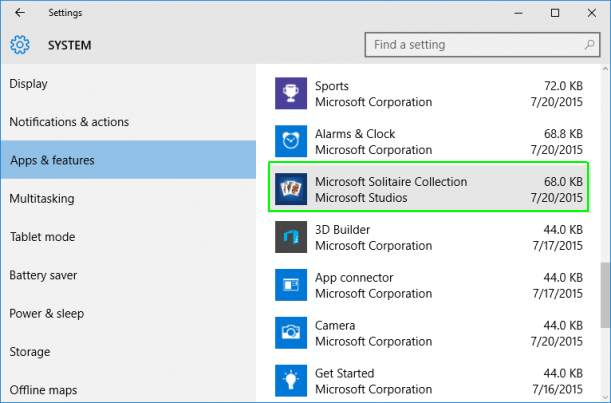Streamlining Your System: A Comprehensive Guide on How to Uninstall Programs in Windows 10

Introduction
As you use your Windows 10 computer, you may accumulate a variety of programs and applications, some of which you may no longer need or want. Uninstalling programs not only frees up valuable disk space but also enhances system performance. This comprehensive guide walks you through various methods to uninstall programs in Windows 10, catering to different user preferences and scenarios.
Section 1: The Importance of Uninstalling Programs
1.1 Disk Space Management
- Optimizing Storage: Uninstalling unnecessary programs helps reclaim disk space, ensuring efficient utilization of your storage resources.
- Improving System Performance: Reducing the number of installed programs can lead to a faster and more responsive system.
1.2 Enhanced Security
- Reducing Vulnerabilities: Uninstalling unused programs minimizes the attack surface and potential vulnerabilities, enhancing overall system security.
- Mitigating Risks: Outdated or unused applications may pose security risks if not regularly updated or maintained.
Section 2: Uninstalling Programs via Settings
2.1 Overview
Windows 10 provides a user-friendly interface for uninstalling programs through the Settings menu.
2.2 Steps to Uninstall Programs via Settings
- Open Settings: Click on the Start menu, select “Settings” (gear icon), or press
Windows key + Ito open Settings directly. - Navigate to Apps: In the Settings menu, select “Apps.”
- Access Apps & Features: Click on “Apps & features” in the left pane.
- Select Program to Uninstall: Scroll through the list of installed programs, locate the program you want to uninstall, and click on it.
- Uninstall: Click the “Uninstall” button that appears.
- Follow Uninstallation Wizard: Follow any on-screen instructions in the uninstallation wizard to complete the process.
Section 3: Uninstalling Programs via Control Panel
3.1 Overview
The traditional Control Panel also offers a method to uninstall programs, providing additional options for advanced users.
3.2 Steps to Uninstall Programs via Control Panel
- Open Control Panel: Press
Windows key + Xand choose “Control Panel.” - Navigate to Programs: In the Control Panel, select “Programs” and then choose “Programs and Features.”
- Locate Program: Scroll through the list of installed programs, find the program you want to uninstall, and click on it.
- Uninstall: Click the “Uninstall” button located at the top of the window.
- Follow Uninstallation Wizard: Proceed through the uninstallation wizard, following on-screen prompts to complete the process.
Section 4: Using PowerShell to Uninstall Programs
4.1 Overview
For users comfortable with command-line interfaces, PowerShell provides a powerful tool to uninstall programs.
4.2 Steps to Uninstall Programs Using PowerShell
- Open PowerShell: Press
Windows key + Xand choose “Windows PowerShell” or “Windows PowerShell (Admin).” - Enter Command: Type the following command and press Enter:powershell
Get-Package -Name "ProgramName" | Uninstall-Package
Replace “ProgramName” with the actual name of the program you want to uninstall.
- Confirmation: Confirm the uninstallation when prompted.
Section 5: Uninstalling Programs from the Start Menu
5.1 Overview
The Start Menu provides a convenient way to uninstall programs directly.
5.2 Steps to Uninstall Programs from the Start Menu
- Open Start Menu: Click on the Start button to open the Start Menu.
- Locate Program: Scroll through the list of installed programs, right-click on the program you want to uninstall, and select “Uninstall.”
- Follow Uninstallation Wizard: Proceed through the uninstallation wizard, following on-screen prompts to complete the process.
Section 6: Third-Party Uninstaller Tools
6.1 Overview
Third-party uninstaller tools offer additional features and capabilities for users seeking a more comprehensive program removal experience.
6.2 Examples of Third-Party Uninstaller Tools
- Revo Uninstaller: Revo Uninstaller provides advanced scanning and removal capabilities, including leftover files and registry entries.
- IObit Uninstaller: IObit Uninstaller offers a user-friendly interface with batch uninstallation, residual file cleaning, and program update features.
Section 7: Uninstalling Built-In Windows Apps
7.1 Overview
Windows 10 comes with several built-in apps that users may want to uninstall for various reasons.
7.2 Steps to Uninstall Built-In Windows Apps
- Open PowerShell as Administrator: Press
Windows key + Xand choose “Windows PowerShell (Admin).” - Enter Command: Type the following command and press Enter:powershell
Get-AppxPackage -allusers | Remove-AppxPackage
- Confirmation: Confirm the uninstallation when prompted.
Section 8: Uninstalling Programs on a Local Network
8.1 Overview
For users on a local network, the process of uninstalling programs may vary, and network administrators may have specific procedures in place.
8.2 Consult Network Administrator
- Contact Network Administrator: If your computer is part of a local network or domain, consult your network administrator for guidance on uninstalling programs, as they may have specific procedures or restrictions in place.
Section 9: Conclusion
Uninstalling programs in Windows 10 is a fundamental aspect of maintaining a well-organized and efficient computing environment. Whether you prefer the user-friendly interfaces of Settings and Control Panel, the command-line capabilities of PowerShell, or the additional features provided by third-party uninstaller tools, this comprehensive guide has covered diverse methods to accommodate various user preferences and scenarios. Regularly reviewing and removing unnecessary programs contribute to a streamlined system, optimizing performance and ensuring a more secure computing experience. Empower yourself by incorporating these practices into your routine, and enjoy a more efficient and responsive Windows 10 experience.




